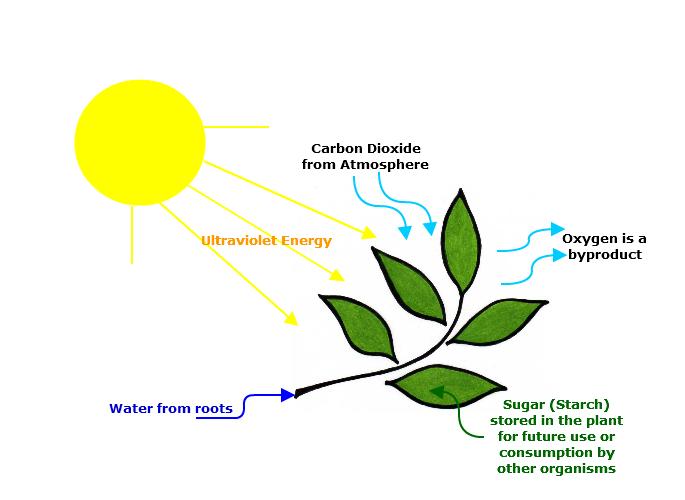Nutrition
When we think of plants and how they get their nutrition, most of us will think of photosynthesis. This is because children learn from an early age that plants get their energy from the sun. This is a very important process, not only for plants, but for all other life on earth because plants are the only organisms that can can convert sunlight energy into a usable form of energy.
6CO2 + 6H2O + Light Energy --> CO2 + C6H12O2(Sugar)

Photosynthesis mostly takes place in the leaves, more specifically, the chloroplasts (also what makes plants green). Water, carbon dioxide and light energy are taken up by the plant and go through chemical processes. The first process (light reaction) converts light energy and water into another form of energy known as ATP and gives off oxygen as waste. The ATP from the light reaction is used to fix the carbon in carbon dioxide into starch in the second process known as the dark reaction. The starch can be used as energy by the plant or other organisms that consume it.
There are a few important structures besides the leaves and chloroplasts that contribute to the successful gathering of nutrition. The stomata are on the underside of the leaf and are responsible for opening and closing to allow carbon dioxide in the leaf and oxygen out. Xylem and phloem are specialized tube like structures that allow for water and nutrient transport throughout the whole plant.

